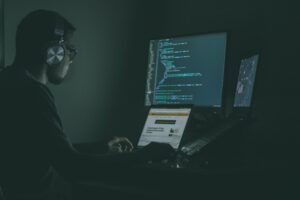The digital age has ushered in a plethora of changes, especially in the work environment. With the rise of remote work, particularly accelerated by global events such as the COVID-19 pandemic, the demand for tracking tools and digital accountability has surged. These instruments serve as a bridge of trust between employers and employees, ensuring that work is being done efficiently and effectively from any corner of the world. Time Doctor, as one such tool, has been at the forefront of this revolution, providing detailed insights into an employee’s work pattern. Yet, with the emergence of such trackers, a new question arises: How do we balance genuine productivity with apparent computer activity?
Understanding the Mechanics of Time-Tracking Software
In essence, software like Time Doctor works by monitoring user activities on a computer, from keystrokes and mouse movements to screen time on various applications. This offers an in-depth view of an employee’s productivity, mapped meticulously with timestamps1. However, the importance of accurate computer activity transcends mere tracking. It becomes a yardstick for efficiency metrics, building employer trust, and directly impacts the compensation of remote workers and freelancers. Yet, as technology evolves, so do the nuances of what truly constitutes ‘work’ in the digital realm.
The Reality of ‘Idle’ Time in Various Professions
Every profession has its rhythm. A chat support agent, for instance, operates in bursts—intense periods of back-and-forth followed by lulls awaiting the next customer query. Similarly, graphic designers often have contemplative phases, where they’re brewing ideas and seeking inspiration2. These moments of ‘inactivity’ on their devices are, paradoxically, some of their most crucial periods of productivity. It’s here that traditional time trackers fall short, branding these moments as idle or unproductive. The pressing question then becomes: How can technology recognize and respect these nuances of the modern workplace?
Diving into IdleBuster: A Glimpse, Not a Tour
Enter IdleBuster, a novel tool designed to simulate genuine human activity on a computer. By creating an illusion of activity, IdleBuster provides those necessary breathers for professionals without compromising on apparent productivity. This isn’t about duping systems or shirking work, but rather recognizing that not all valuable work translates into clicks, keystrokes, or screen shifts. As IdleBuster simulates mouse movements, keyboard activities, and even tab switches, it fills the gap left by traditional trackers, making sure professionals aren’t penalized for the inherent ‘pauses’ in their workflow.
Comparing Features: IdleBuster and Time Doctor
While both Time Doctor and IdleBuster aim to reflect productivity, their approach and end goals differ considerably. Time Doctor takes a direct route, capturing the raw data of computer activity and presenting it for analysis. IdleBuster, on the other hand, ensures that the often-misunderstood ‘idle’ moments don’t compromise the overall portrayal of a worker’s day. Its power lies in its unpredictability, closely mimicking human behavior. Yet, this comparison inevitably brings us to a larger, ethical question: Is it right to use such tools, and where do we draw the line between fair compensation and genuine work?
The Real-World Implications of Using IdleBuster
For freelancers and remote workers worldwide, tools like IdleBuster can be a game-changer. It alleviates the undue stress caused by relentless monitoring, ensuring they’re compensated for periods that conventional trackers might dismiss as ‘idle. Additionally, by ensuring fair compensation, it indirectly fosters trust in remote ecosystems, leading to healthier employer-employee dynamics. However, while its potential benefits are undeniable, it’s equally crucial to acknowledge and address the reservations some might have about such tools.

Making the Right Choice: Factors to Consider
The choice to use IdleBuster or any other tool hinges on individual circumstances and professional demands. For many, it fills a pressing need, ensuring they aren’t unfairly penalized. However, its use must be rooted in a genuine need, not as a crutch to enable dishonesty. Ethical considerations should be at the forefront, balanced with the demands of one’s profession. After all, technology, at its best, should serve as an enabler, not a tool of deception.
Most Commonly Asked Questions
Time-tracking software helps employers monitor the productivity and work patterns of remote employees, ensuring that tasks are completed efficiently and on schedule.
Time-tracking tools can offer greater transparency and trust between freelancers and their clients, but they can also add pressure, potentially blurring the lines between work hours and personal time.
Yes, there are ethical considerations such as privacy, potential micromanagement, and how ‘productivity’ is defined and measured. It’s crucial to ensure that such tools respect employee privacy and don’t foster a culture of constant surveillance.
These professionals often rely on clear communication with their employers or clients about the nature of their work. This includes explaining the necessity of ‘idle’ periods for creativity and charging based on project outcomes rather than hours logged.
Not necessarily. Tools like activity simulators can be used to reflect the true nature of certain jobs where contemplation or waiting is an essential part. However, their misuse to feign productivity would be considered dishonest.
Employers should consider the nature of the task, the individual’s work pattern, and the quality of the outcome rather than focusing solely on active hours. Recognizing that productivity doesn’t always correlate with continuous activity is vital.
Open communication with employers is key. Employees should discuss their work patterns, the nature of their tasks, and any concerns about how the data from time-tracking tools might be interpreted.
If an employee uses an activity simulator to feign a full day’s work without actually accomplishing tasks or meeting targets, it would be considered misuse. Using such tools to avoid work or deceive employers is inappropriate.
Yes, many companies rely on outcome-based evaluations, regular check-ins, project management tools, and mutual trust to ensure productivity without continuous monitoring.
Technology can move towards more holistic measures of productivity, integrating qualitative feedback, and recognizing diverse work patterns. By prioritizing outcomes and overall well-being, tech can better align with modern work values.
Conclusion
As the landscape of work continues to evolve, it’s essential for technology to keep pace, understanding and addressing the nuanced needs of modern professionals. While tools like Time Doctor provide invaluable insights, the importance of understanding the varied rhythms of different professions cannot be understated. IdleBuster, in this context, emerges as a solution, ensuring that no moment, active or contemplative, goes unrecognized or uncompensated. As we move forward, the onus lies on both employers and employees to wield these tools responsibly, ensuring that the sanctity of work and trust remains unbroken in our increasingly digital world.





